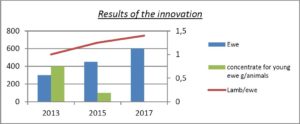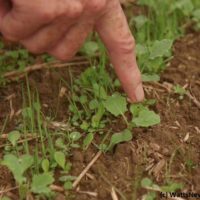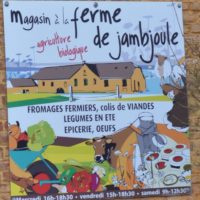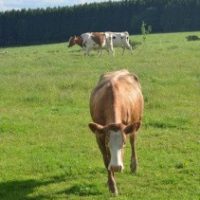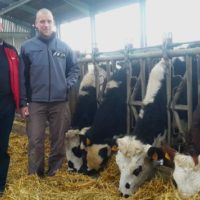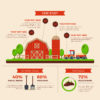Description
Background
The farmer had unproductive meadows in quantity and quality and could not increase livestock or improve his food costs with the current system. Regional actions are set up to support the change around fodder autonomy so he has to take advantage to review his system. He had the will to produce grass for the herd with the possibility of fattening some animals on grass, to exploit the potential of his lands which are not so much grain lands. He wanted to find a profitable and
productive sheep farming.
Detailed description
The farmer has set up the rotating pasture on his farm and at the same time reinvents his permanent meadows thus enabling him to double his herd (300 to 600 ewes). Renovation of grasslands from permanent grassland to temporary grassland benefits biodiversity provides more forage resources for use and can have a good impact on animal health (reduction of parasitism). Indeed, it uses a multi-species mixture with forage colza at sowing. Thanks to this, he can graze
after two months.
It also uses tannin plants such as chicory and plantain that have a positive effect on grass ingestion. The second advantage of these plants is their pivoting root system which allows better moisture retention during the summer.
Finally, the management of the minimum and maximum grass height on pasture was set up and has allowed to reduce the plots size and foster grass growth.
Thanks to this, he doubled the herd from 300 to 600 ewes on the same surface, the ewes now graze all year whereas before it was only 6 months. Before slaughter, he is fattening the reforms on grass as well as for some of the lambs. Young ewes do not receive concentrate anymore (before 400 g / lamb).
Results
The workload has been significantly reduced. The ewes being more time on pasture limits the constraint work in the building: mulching, feeding, etc. to the birth period only.
Profitability was also improved from the very first year, the farmer invested about 6000 € to renovate his grasslands and had an economy of about 14.000 € (+ 8000 €). Savings happen thanks to the significant drop in inputs: feed for fattening or for ewe lambs, preparation for lactations partly on grass…
Production has also increased: prolificacy and numerical productivity has improved from 1 lamb sold per ewe to an average of 1.3 now.
For the farmer’s point of view, the result is not only economic, the setup of this system also allowed him to question again, to rethink and analyze his system. He thus has come out of a routine system, had to question himself again and he now looks more at his herd, observes the behavior of his animals. And this way, the farmer feels like the work is less humdum.
Through this project he also experienced group and collective exchanges with breeders who have the same approach. It is a real advantage and a real added value to the production objective.
Adoption criteria
From his point of view, everything is a question of will. Anyone can implement this innovation, if someone wants to get out of his system and to question himself, it is possible.
Indeed, in his case, even with low potential soils, he now manages to take advantage of it properly. One just has to think and adapt one’s forage system to one’s herd and not the other way around. Any system is perfectible according to him just dare to question old choice and invest.
Future prospects
According to him, programs like the one in which he participates (Herbe et Fourrage Centre) or Inno4Grass are a way to disseminate this type of project/questioning. For one time, when too many farmers have relied on an existing system without trying to change it, it must be shown that it is possible and effective.
Now the farmer would like to work tannin plants for example to try to reduce the medicalization.
He is also implanting new hedges of oaks and other trees because for him it will bring richness to its soil and thus to its meadows. But for him it can work even more in this direction with conservation agriculture alternatives … that can improve the value of the soil and therefore grasslands.
For him the current threats come either from the rules: one should not constrain the farmers too much because sometimes it is not necessarily judicious. For example, it was previously forbidden to upturn permanent grasslands when they had no more potential, values and flora had become impoverished. Today, by redoing them, it brings back value to the ground, different species…
From the moment someone comes to appreciate the fact that it is better before than after for the biodiversity of his meadow why would not it be possible to remake it? It is necessary to have rules but it is also necessary that if one brings the proof that it is positive anyway one can go beyond. The current problem of our society is that everyone in all cases must apply the same rules while everything is not all black or all white.
And the second threat to which we will have to quickly answer is the climatic constraint. Extremely dry years like this year are becoming more commonplace. We will have to find ways to adapt our systems and our agriculture to this new climate. Look for example species from other countries that are able to withstand drought…
Farm description
- Sheep breeding
- 600 ewes
- 138ha of which 127ha of grass.
- Objective of productivity: 1.4 lamb/ewe
- One main soil type: Clay
Climate
Climate is continental with cold winter and warm summer. Climatology and soils are not conducive to good grass growth throughout the year.

